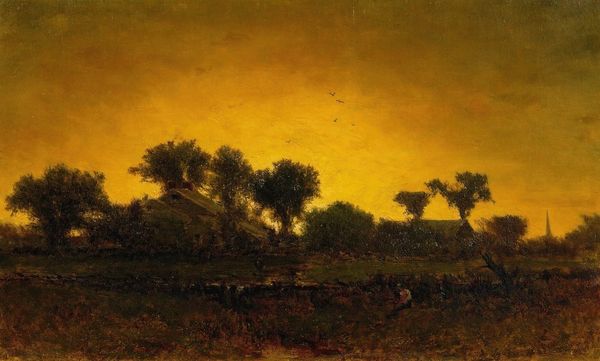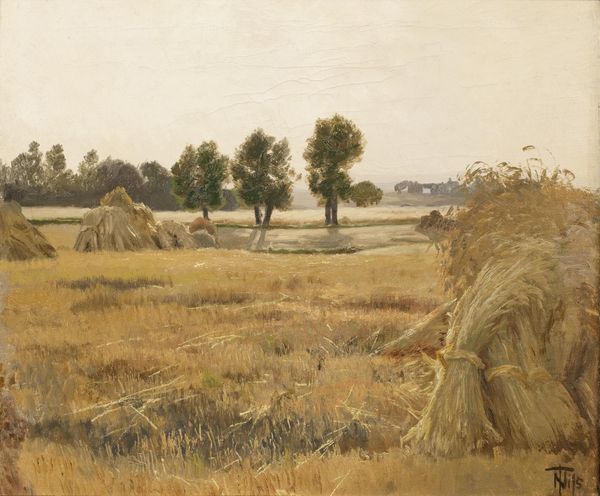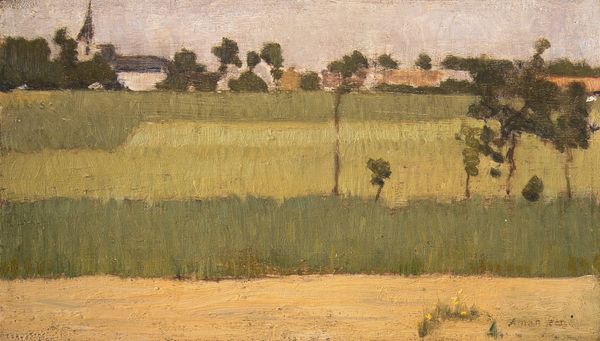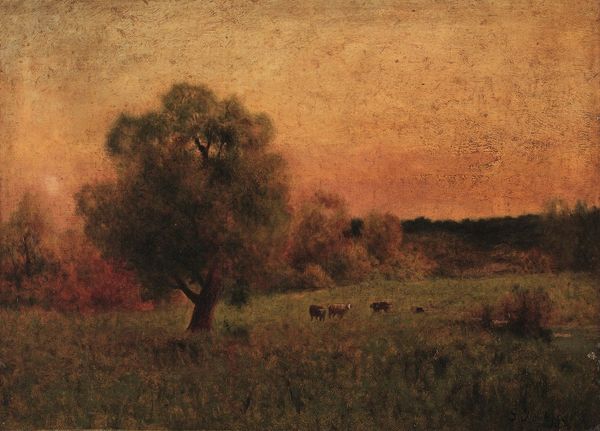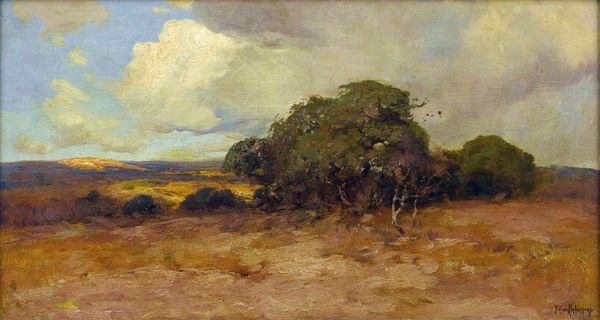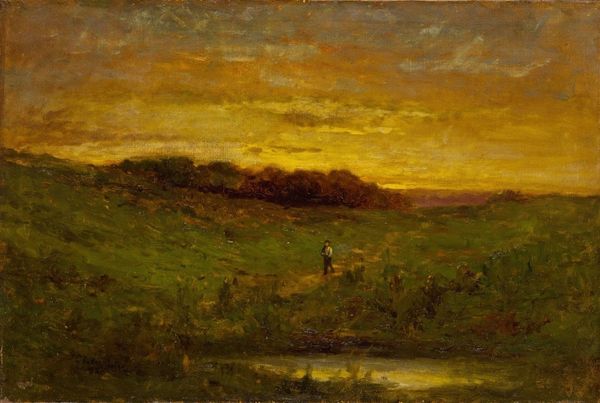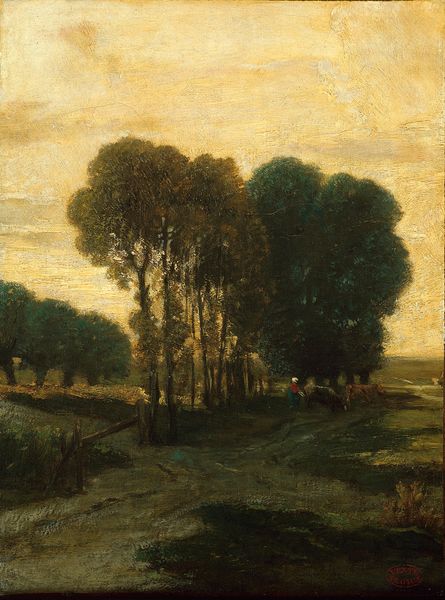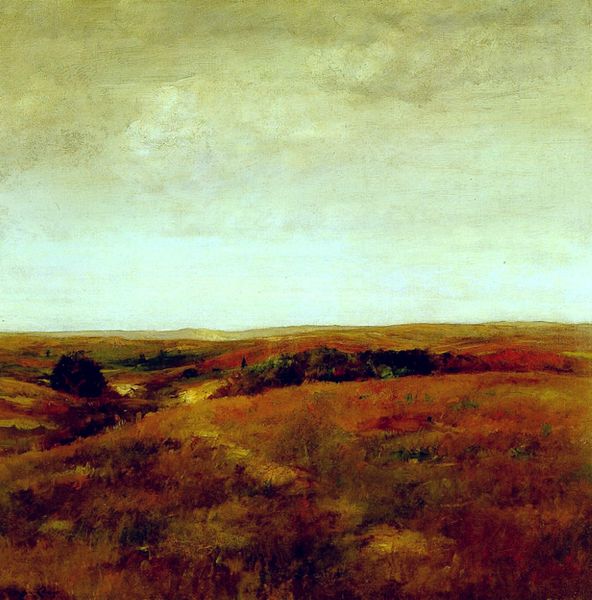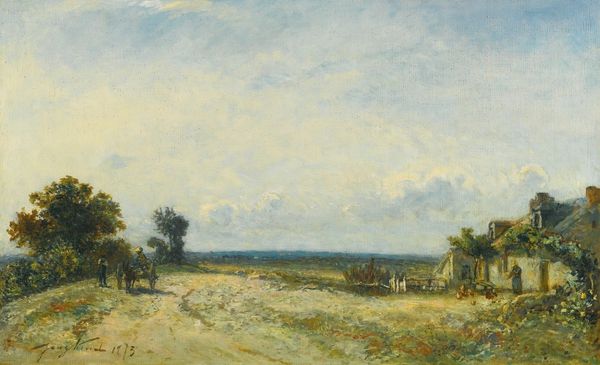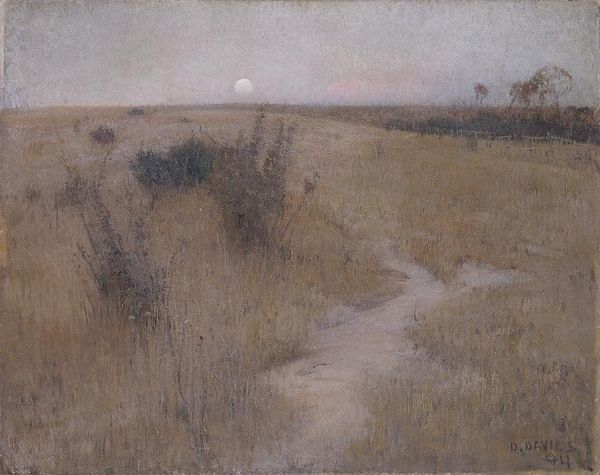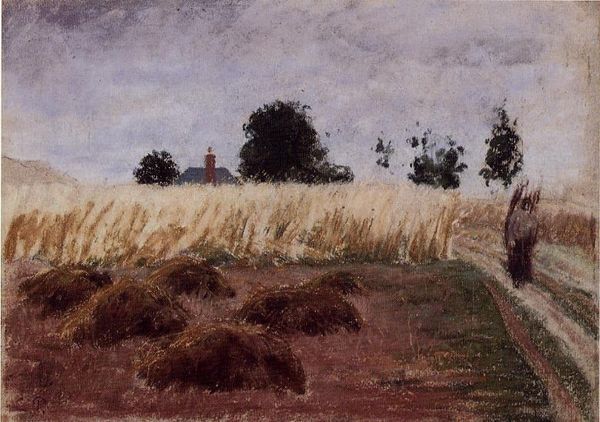
Dimensions: support: 203 x 270 mm frame: 448 x 390 x 42 mm
Copyright: CC-BY-NC-ND 4.0 DEED, Photo: Tate
Curator: Norman Garstin's "Haycocks and Sun," part of the Tate Collections, presents a seemingly simple scene. But look closer. Editor: It feels like summer's last breath—almost melancholy. The golden field is so tactile; you can practically feel the sun-baked straw. Curator: Exactly. Garstin, born in 1847, engaged with the realities of rural labor. The haycocks are evidence of human activity, of a specific agricultural process. Editor: But they're also strangely monumental, these little pyramids. They dot the landscape, echoing the distant trees against that bruised, twilight sky. Curator: Consider the materiality. Oil on a relatively small support, yet it evokes vastness through composition. The brushstrokes imply the physicality of stacking hay. Editor: I love how the muted palette captures the hazy atmosphere, that liminal space between day and night. It's more than just hay; it’s about capturing a mood. Curator: Indeed. The painting speaks to how art immortalizes everyday labor and how we consume idyllic visions of country life. Editor: This piece makes me wonder about the lives of the laborers, but also about my own place within this landscape.
Comments
tate 8 months ago
⋮
http://www.tate.org.uk/art/artworks/garstin-haycocks-and-sun-t03163
Join the conversation
Join millions of artists and users on Artera today and experience the ultimate creative platform.
tate 8 months ago
⋮
Painted in the open air, this captures the immediate sensations of the warm glow of late summer twilight. It is tempting to speculate whether Garstin had seen Monet's pictures of haystacks. Garstin came to painting late in life. He trained first as an engineer, then turned to architecture. In 1872 he went to prospect for diamonds in South Africa and helped set up the 'Cape Times', becoming its sub-editor. He received his artistic training in Antwerp and Paris. After travelling in Morocco and Italy he settled in Newlyn in 1886, joining the NEAC the following year. Garstin wrote many articles, for the 'Art Journal' and 'Studio'. Gallery label, September 2004
